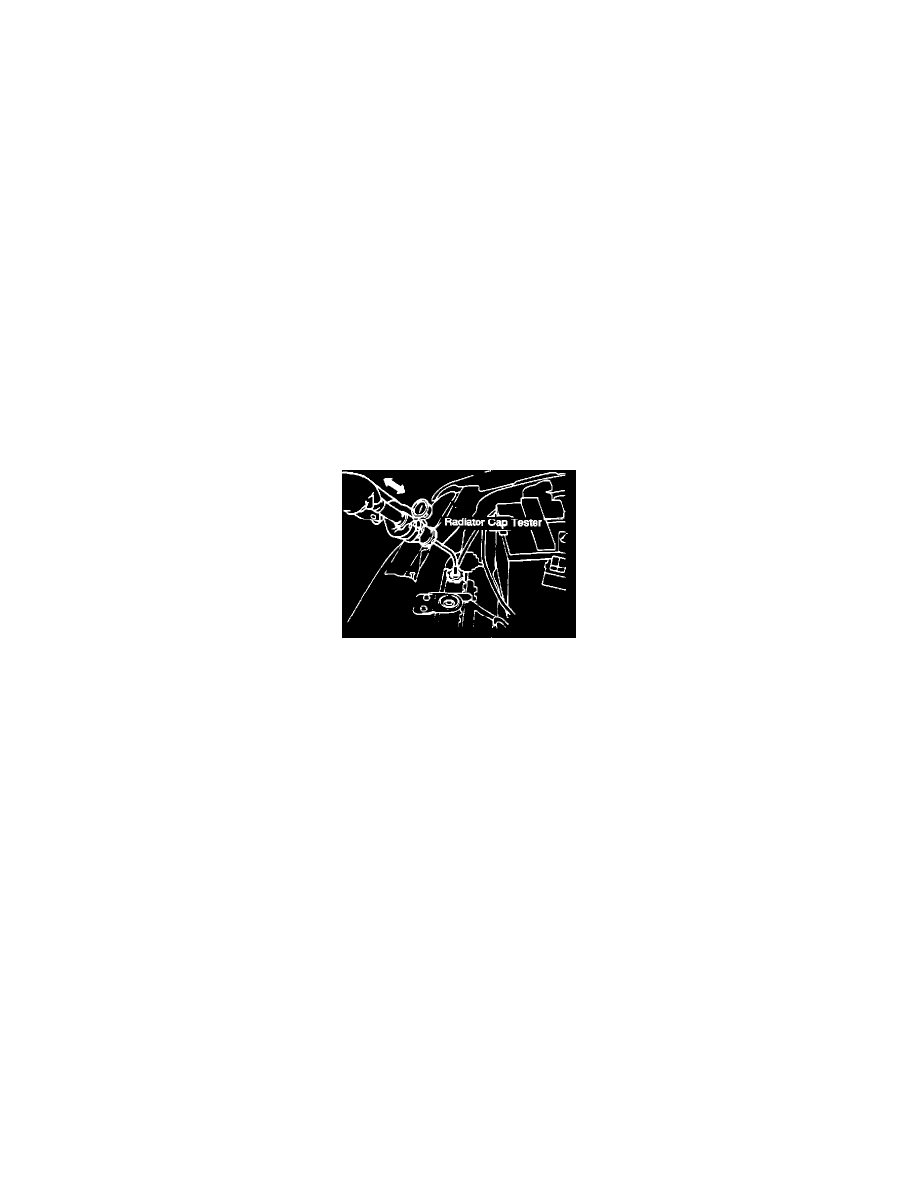Elantra L4-1595cc 1.6L DOHC (1993)

Radiator: Customer Interest
Radiator/Radiator Hose - Coolant Leaks
Group: ENGINE MECHANICAL
Number: 93-20-002
Date: MARCH, 1993
Model: ALL
Subject:
RADIATOR COOLANT LEAK INSPECTION PROCEDURE
Coolant visible in the area of the radiator upper tank crimp is more likely to result from radiator upper hose leakage than from a leaking radiator upper
tank crimp. Leaks from the radiator hose may appear to be the radiator leaks, which could result in unnecessary radiator replacement.
When a leak is suspected in the radiator, perform the following inspection:
1.
Clean away any surface corrosion and coolant on the radiator.
2.
After making sure the coolant has cooled, loosen the radiator cap to relieve any pressure and then remove it.
3.
Confirm that the coolant level is up to the filler neck.
4.
Install a radiator cap tester to the radiator filler neck and pressurize the radiator to 21 psi. Hold for two minutes in that condition.
Warning! Do not exceed 21 psi when pressurizing the system.
5.
While the radiator is pressurized, check for leaks from the radiator core-to-tank seams and from the radiator hose attaches to the radiator.
Do not mistake a hose leak for a radiator seam leak!
If a radiator hose is leaking, replace the hose with a new one and install spring type clamps.
